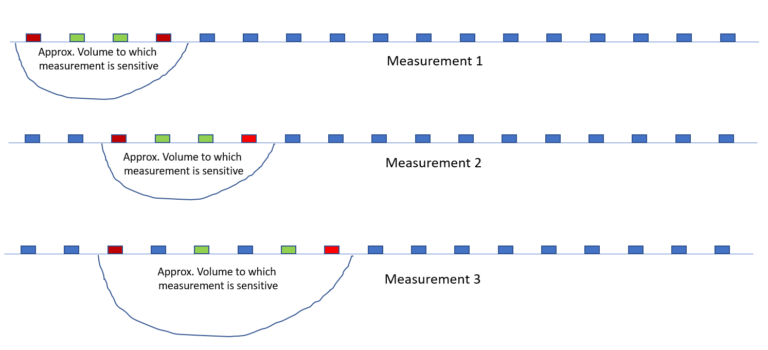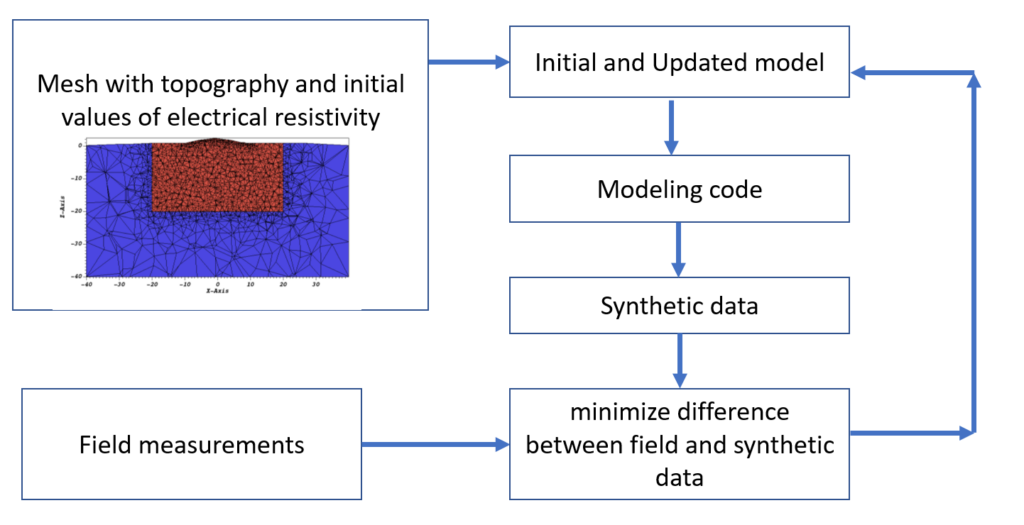Electrical Resistivity Monitoring Primer
Data processing
Inversion concept
As mentioned in the data acquisition section an electrical resistivity survey contains hundreds to thousands of measurements. taken with different combinations of electrodes. Each of these measurements is sensitive to a different part of the subsurface.
We want to translate these measurements into a volumetric distribution of resistivity values of the subsurface. This is done through a process known as inversion. In order to understand this process, it is helpful to consider the cartoons below which explain the concept underneath this process.
The first cartoon shows three measurements. In each measurement we have the current electrodes in red and the potential electrodes in green.

For each of these three measurements (of course, in practice we will have many more), there is a volume to which this measurement is sensitive. As shown below, these volumes overlap.

We can now create a grid (for example the one below, where we have 18 grid blocks), and assign resistivity values to each of the blocks. We can calculate the effect of each grid block on each measurement numerically. By changing the values of the resistivity values in each block we can find a combination which gives the best fit between the observed and synthetic data.

Inversion in practice
Why do resistivity models look smooth?

